The choux pastry or cream puff dough comes from the French word “choux”, meaning cabbage, because foods made with this dough, especially cream puffs, resemble Brussels sprouts when cooked.
Essentially, it is a pre-cooked dough that begins its cooking process on the stove, where the starches gelatinize, and then in the oven.
The main ingredients are water, flour, butter, and eggs, with a pinch of salt and sugar added.
However, there are ingredients that can be substituted, such as milk, which when used instead of water, gives a darker final coloration during cooking; oil or lard instead of butter for a crunchier product; sugar can be omitted, but like milk, it gives a greater coloration to the finished product and slightly improves the flavor.
With these premises, I’ll tell you how I’ve been making choux pastry for years, which always brings me great satisfaction.
Follow carefully, especially the tips, and you’ll obtain a choux pastry or cream puff dough worthy of a pastry shop for baking, zeppole, and cream puffs.
READ ALSO THE TIPS AT THE END OF THE RECIPE
OTHER INTERESTING RECIPES:
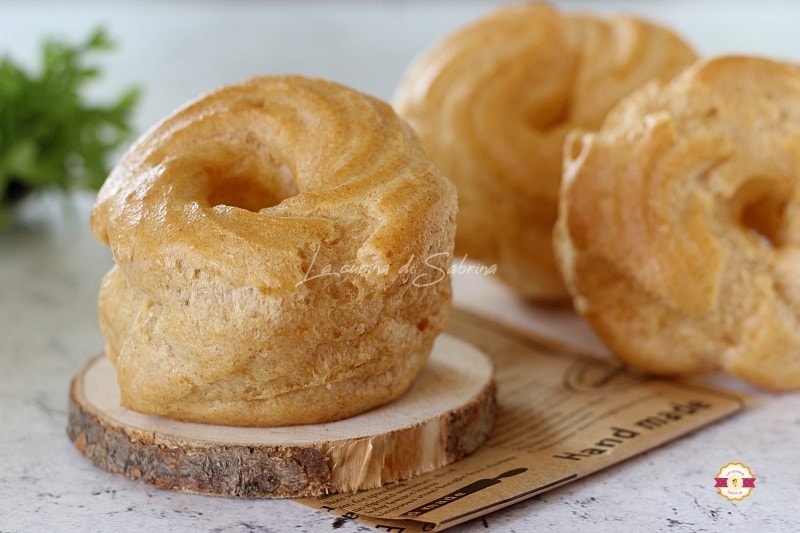
- Difficulty: Medium
- Cost: Economical
- Preparation time: 15 Minutes
- Cooking methods: Oven, Stove
- Cuisine: French
- Seasonality: All seasons
Ingredients
The quantities indicated in the recipe yield 6/7 zeppole.
- 2/3 cup water
- 2/3 cup olive oil (or 1/3 cup softened butter)
- 2/3 cup all-purpose flour
- 2 eggs
- 1 pinch fine salt
- 1 pinch granulated sugar
- 1 egg (to be mixed and added until the ideal consistency is reached)
Tools:
- Thermometer
- Baking Mats
Steps
The third egg should be well beaten and added in small doses until the ideal consistency is reached, as not all eggs have the same weight and not all flours absorb in the same way.
Pour water, oil, a pinch of salt, and sugar into the saucepan. Wait for the water to start boiling, remove from heat, and add the sifted flour all at once. Crucial step to avoid lumps.

Stir vigorously and put the saucepan back on the heat, continuing to stir until the dough detaches from the sides and a film forms on the bottom of the pot. If you have a probe or laser thermometer, the temperature should measure 198°F.

Transfer the dough to a cold container and spread it on the sides to cool quickly. (It should drop to about 122°F).
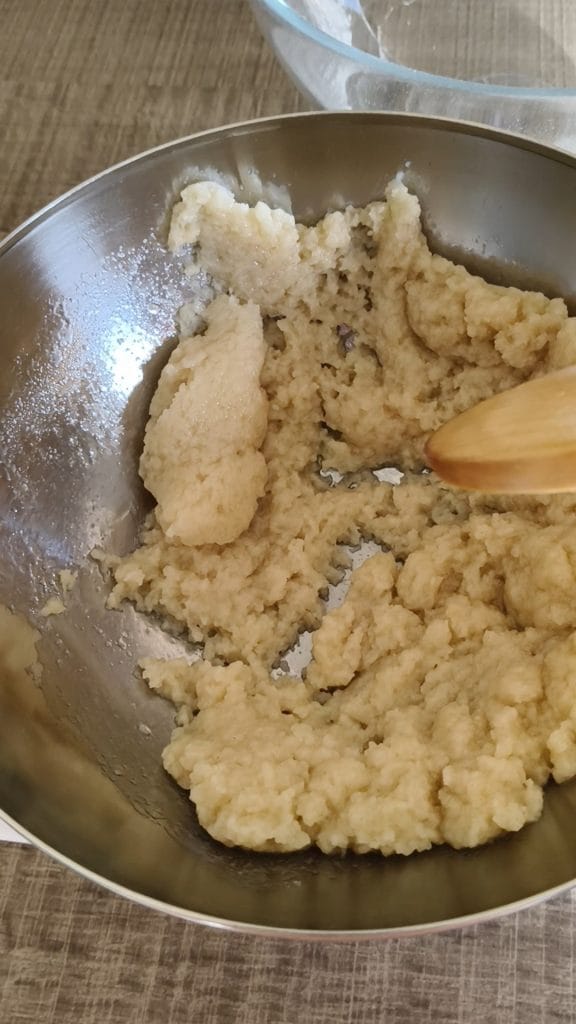
Add the eggs one at a time, not adding the second until the first is fully incorporated into the dough. You can use either a hand whisk or electric beaters to mix. This recipe includes an additional egg, which, as explained at the beginning of the ‘Steps’ paragraph, should be mixed and added slowly, only if needed. The final dough should look like in the picture; when lifting the dough with a spatula, a triangle should form. (image taken from I. Massari’s book Not Just Sugar Vol1)
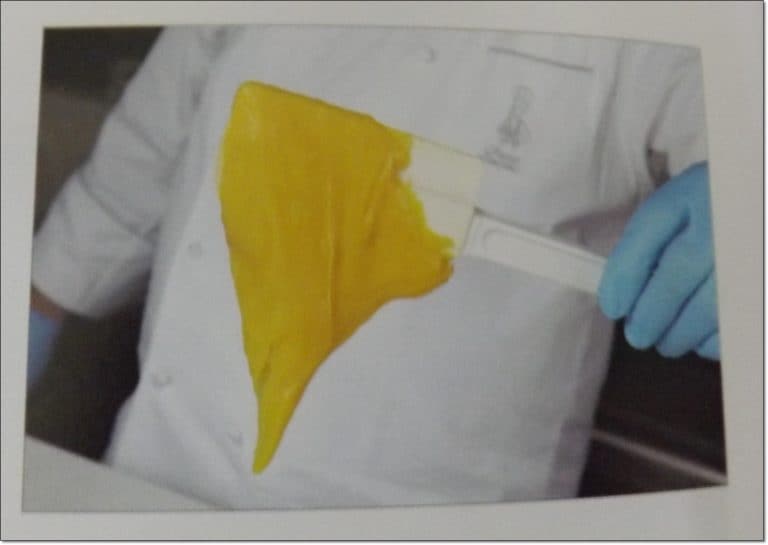
Place the dough in a piping bag with a star or round tip and pipe the dough onto the baking sheet lightly greased (as explained by master Montersino some time ago in a lesson, if the baking sheet is too greasy, the choux pastry will not adhere and will not rise); if you use micro-perforated mats, this step is not necessary. You can do one or two rounds; the important thing is to space the circles to avoid sticking together during baking. Place the sheet in the fridge and preheat the oven to 428°F.
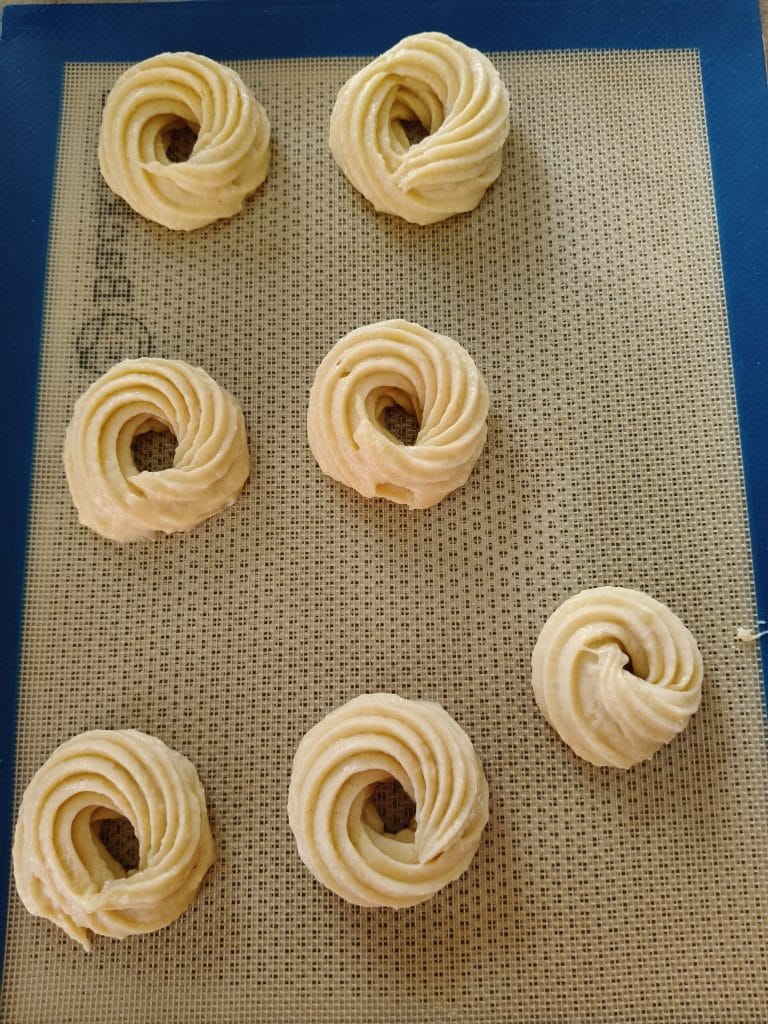
Bake for the first 10 minutes at 428°F, then lower to 392°F and bake another 10 minutes, finishing the baking at 356°F for another 15 minutes, leaving the oven door slightly open for the last 5 minutes to let the steam escape. Leave the baking sheet in the oven to cool. Baking with the door slightly open means leaving the oven door ajar, inserting a ball of foil or a wooden spoon.
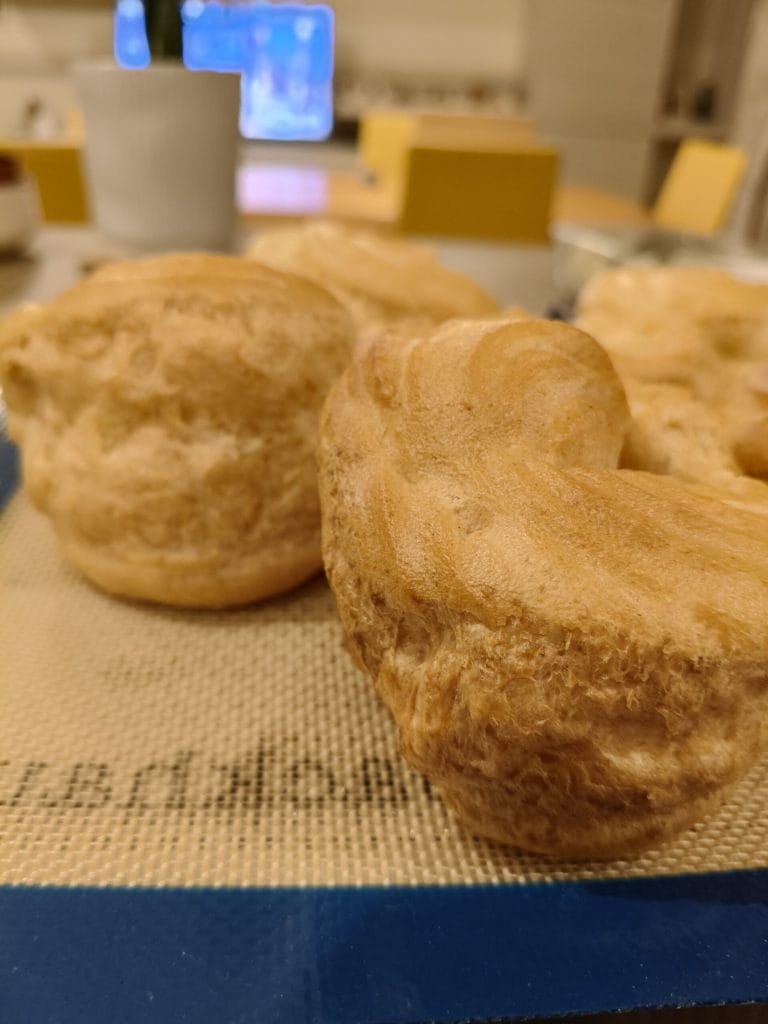
Storage:
The preparations can be made a couple of days in advance and stored in paper bags or frozen.
Note:
If desired, the dough can be prepared the night before and kept in the fridge; this way, the development will be optimal during baking.

